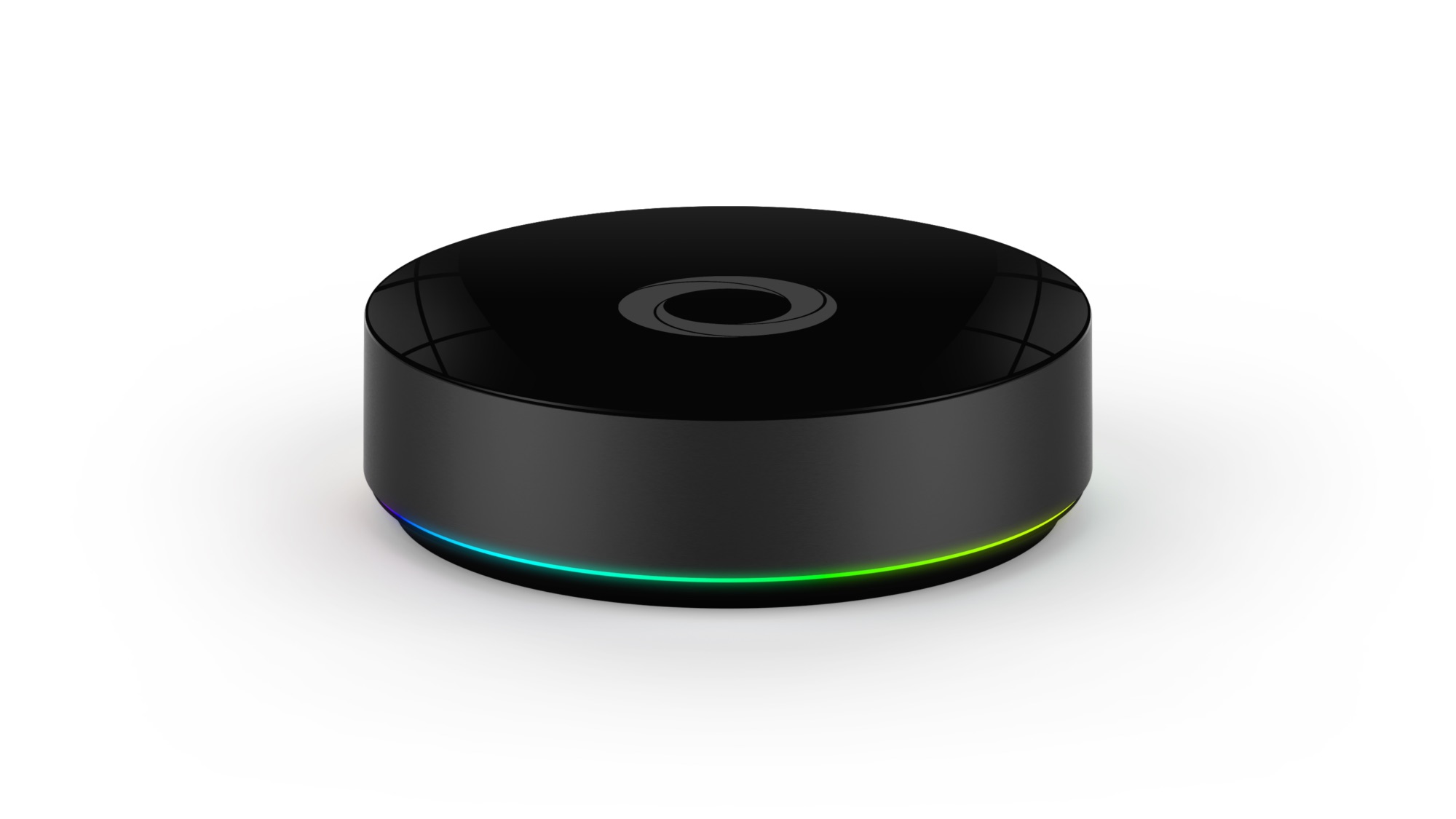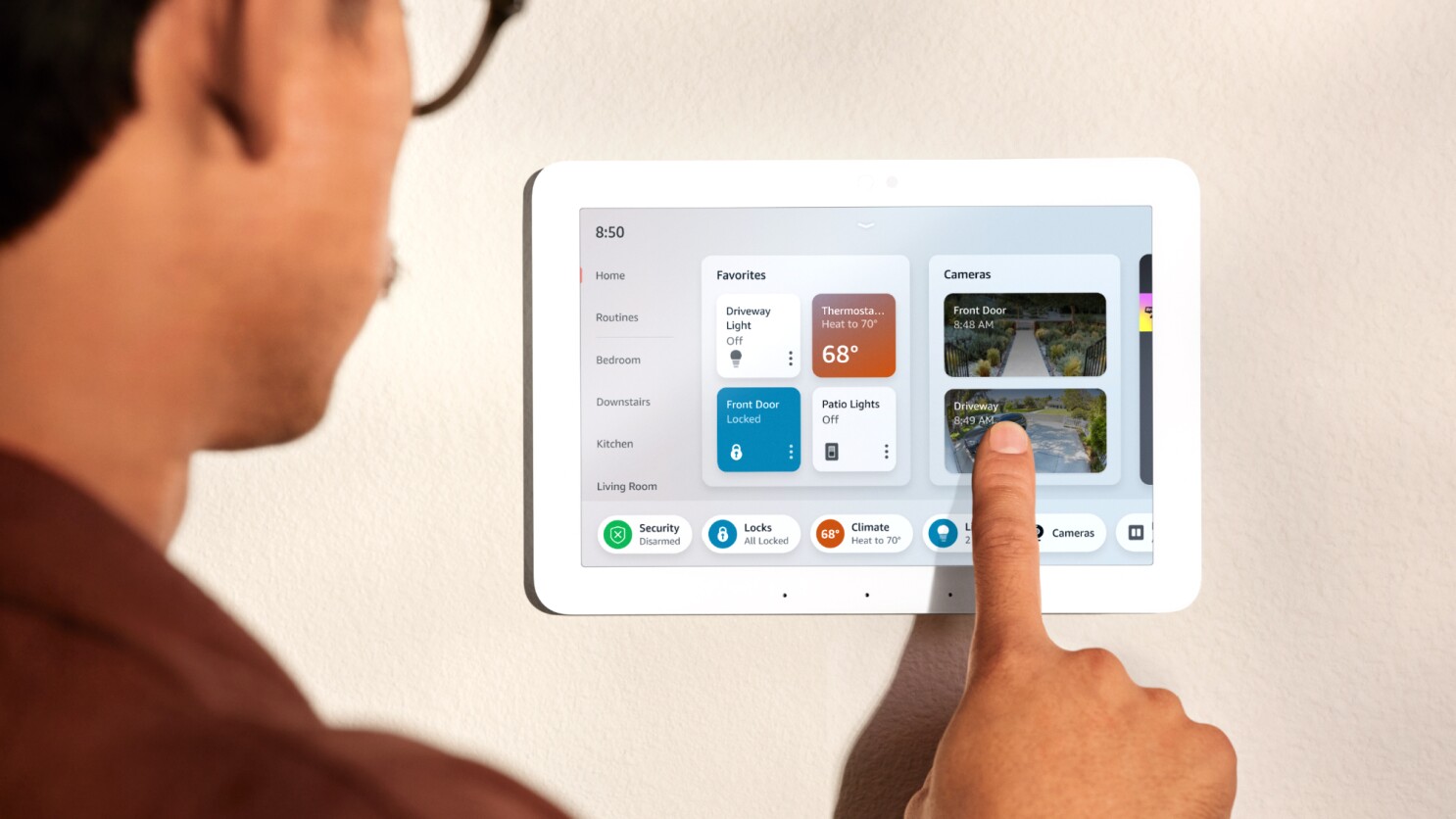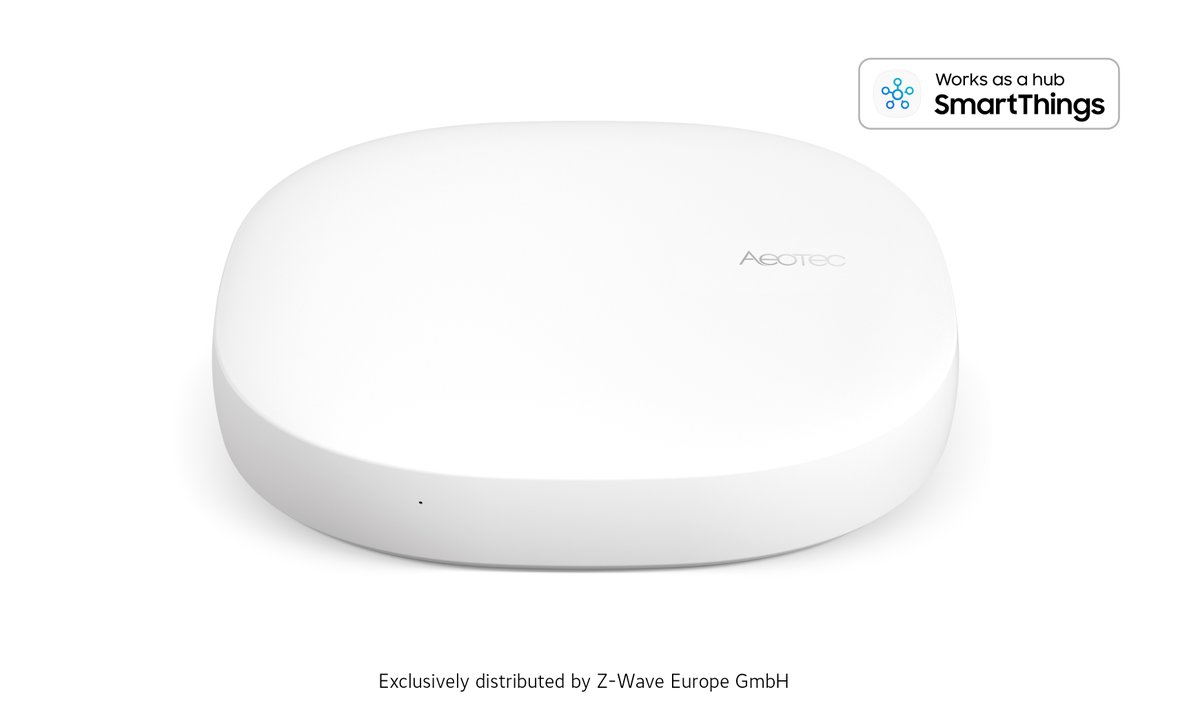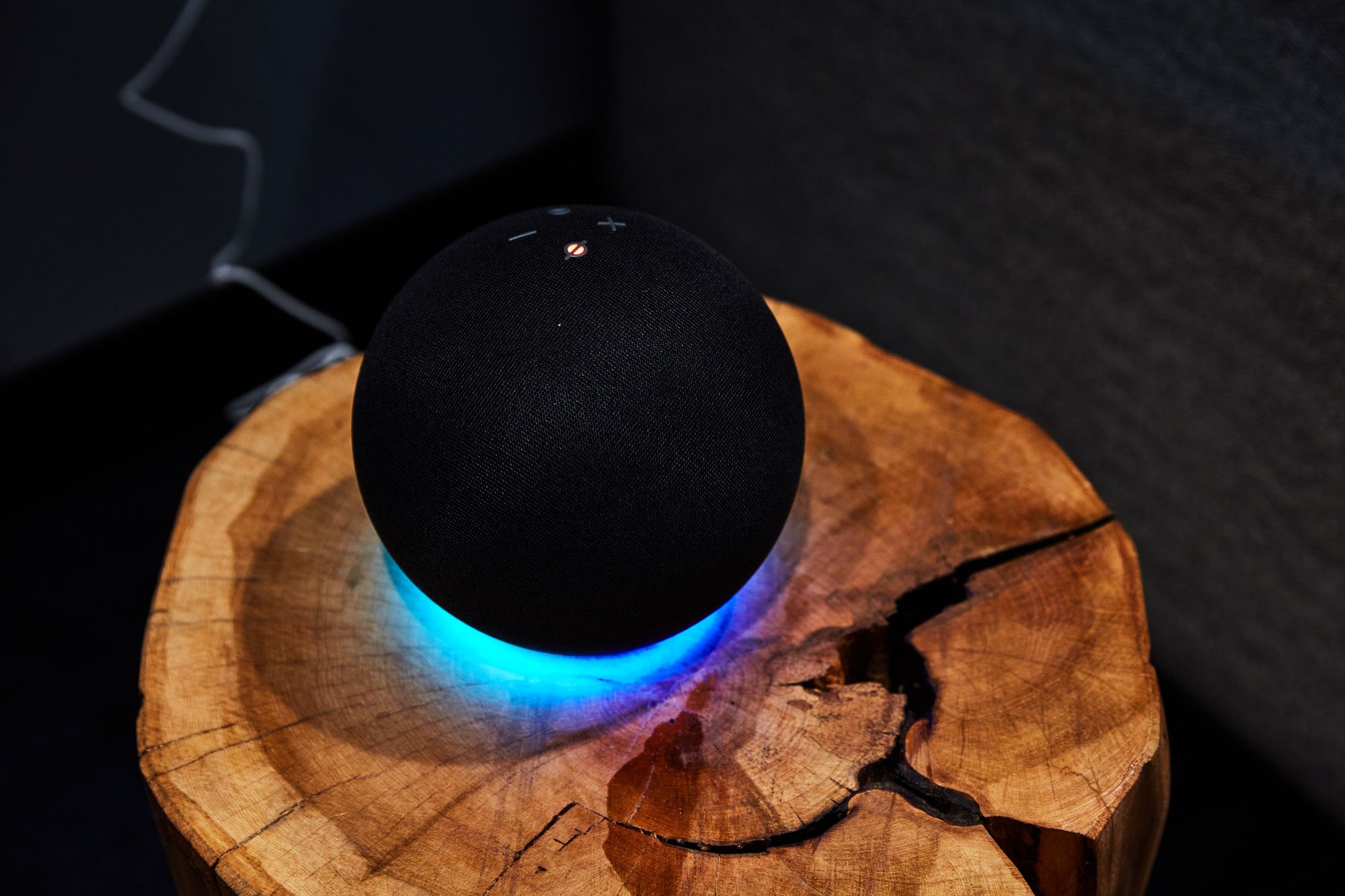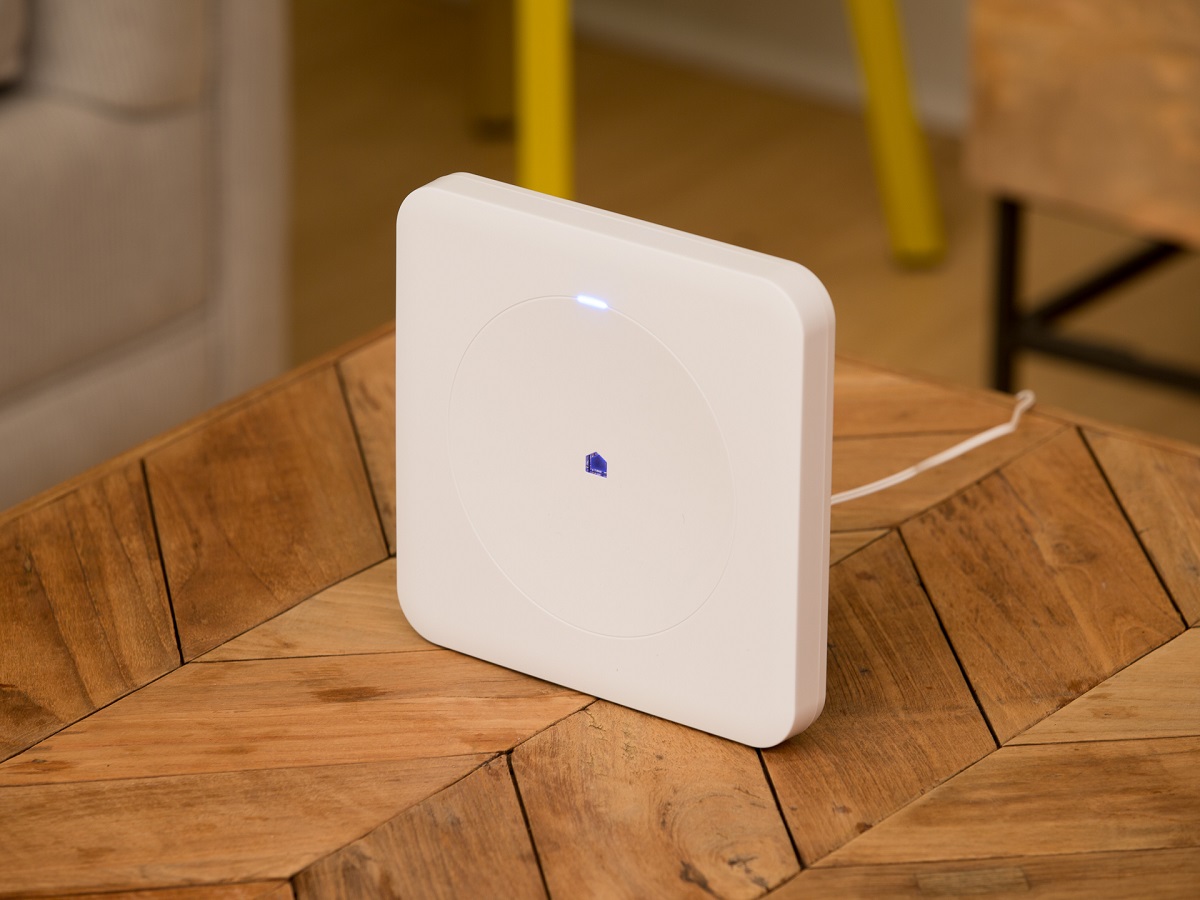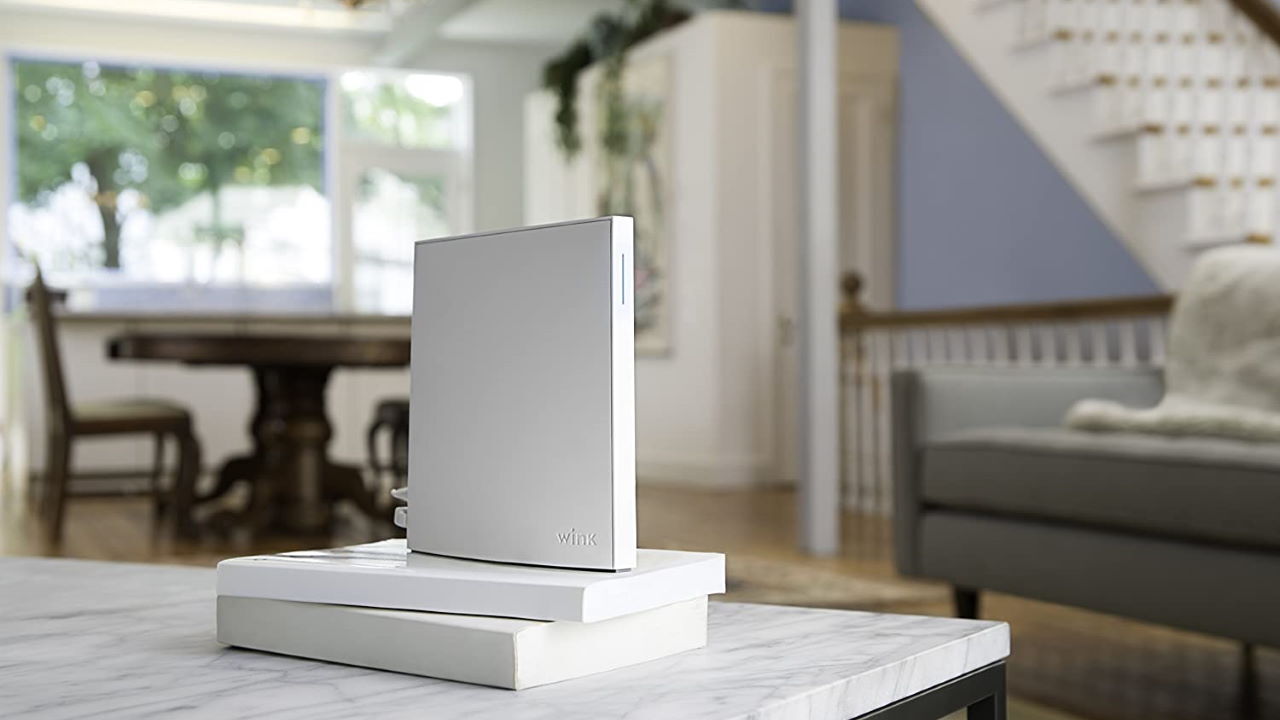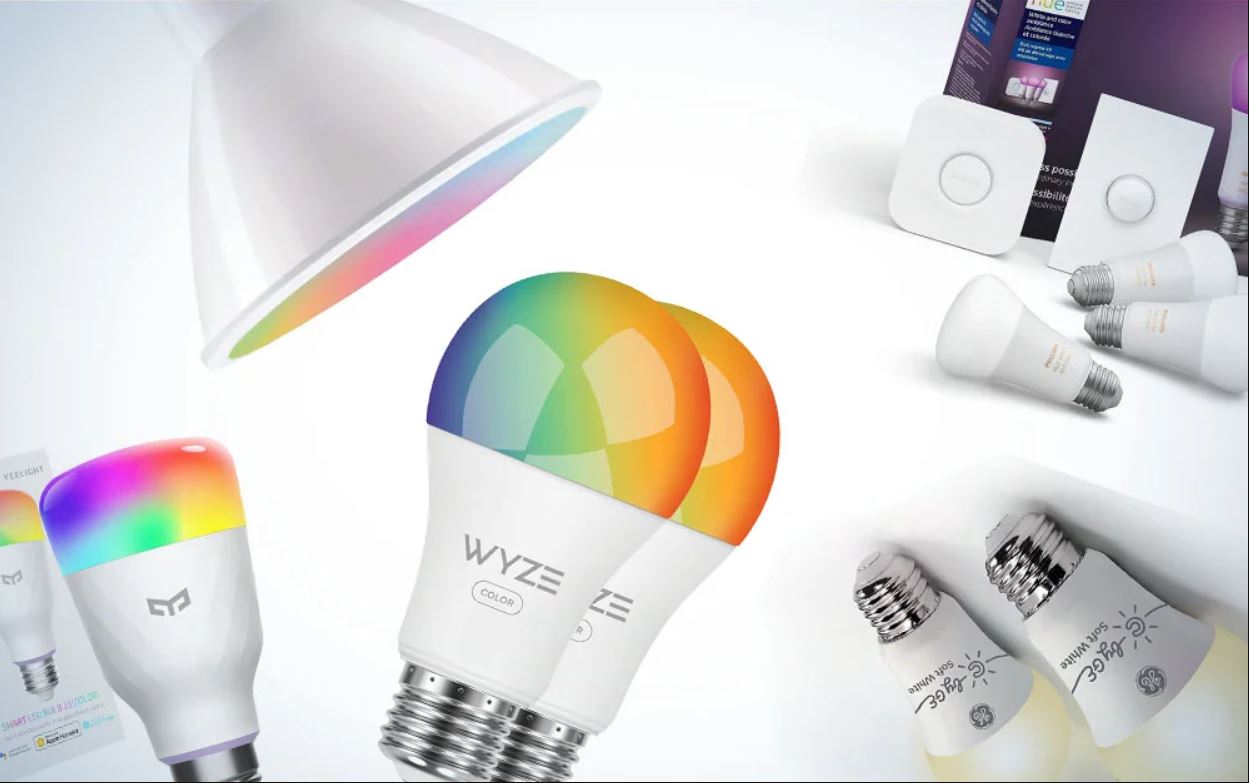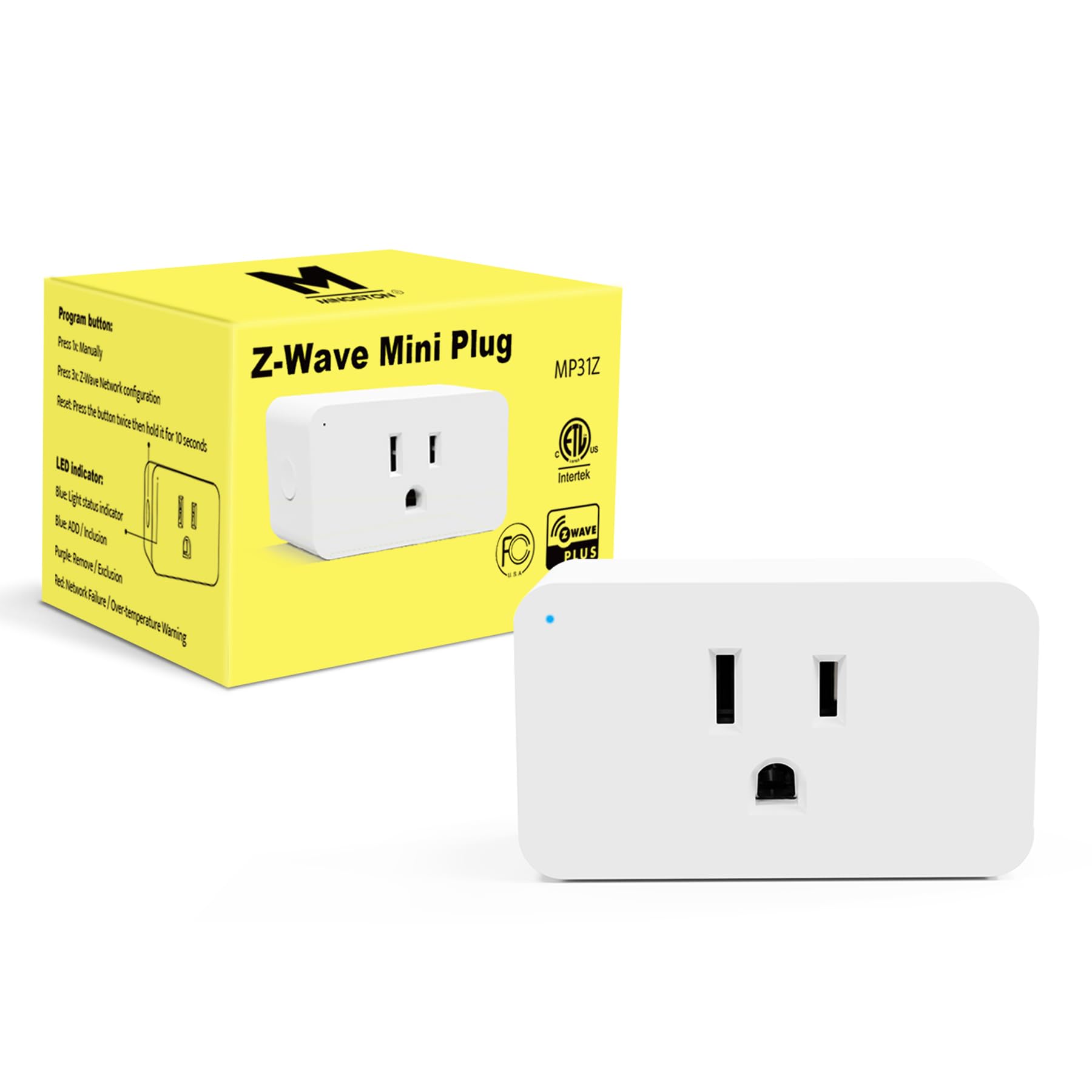Introduction
Welcome to the world of smart homes, where everything is interconnected and automated. With technology advancing at a rapid pace, our homes have become smarter, thanks to the introduction of smart home hubs. These hubs are the central control systems that manage and communicate with various smart devices, making our lives more convenient and efficient.
A smart home hub acts as the brain of your smart home ecosystem, allowing you to control and monitor multiple devices from a single interface. It brings together different smart devices, such as smart lights, thermostats, security systems, and more, creating a cohesive and interconnected network.
Whether you’re a tech enthusiast or a homeowner looking to upgrade your living spaces, understanding what a smart home hub does and how it can benefit you is crucial. In this article, we will explore the features and functions of smart home hubs, the advantages they provide, and popular brands to consider.
Having a smart home hub means having the ability to control your entire home with just a few taps or voice commands. Imagine waking up in the morning and having the lights gradually brighten, the blinds automatically open, and your favorite music playing softly in the background – all without lifting a finger. Or imagine being able to monitor your home’s security cameras and control your thermostats and appliances while you’re away at work or on vacation.
A smart home hub not only simplifies your life but also offers a level of customization and personalization that traditional homes lack. It allows you to create routines and automate tasks according to your preferences – whether it’s setting the perfect ambiance for a movie night or having your coffee maker brew a fresh cup as soon as you wake up.
Moreover, a smart home hub provides a centralized control point, eliminating the need for multiple apps or remotes to operate various smart devices. You can access and manage all your devices from a single user-friendly interface, giving you unparalleled convenience and ease of use.
As we delve deeper into the world of smart home hubs, we will explore how they work, their compatibility with smart devices, popular brands to consider when making a purchase, the setup process, and common troubleshooting tips. So, get ready to experience the wonders of a connected, intelligent home with a smart home hub.
What is a Smart Home Hub?
A smart home hub is a central device or system that serves as the control center for all your smart devices. It acts as a bridge between your devices and allows them to communicate and work together seamlessly. Think of it as the conductor of an orchestra, coordinating and synchronizing different elements to create a harmonious symphony.
At its core, a smart home hub is responsible for managing and controlling the various smart devices in your home. It provides a central interface that allows you to monitor and control these devices using a smartphone app, voice commands, or even through automation routines.
One of the key functions of a smart home hub is to establish a wireless connection with your smart devices. It uses technologies such as Wi-Fi, Bluetooth, Zigbee, or Z-Wave to establish communication and ensure smooth interaction between devices. This enables you to control your smart lights, thermostats, security systems, and other devices from a single app or voice assistant.
Another important aspect of a smart home hub is its ability to integrate different brands and models of smart devices. It acts as a universal translator, allowing devices from different manufacturers to communicate with each other. For example, you can control Philips Hue lights, Nest thermostats, and Ring doorbells all from the same hub, without needing separate apps for each device.
Furthermore, a smart home hub enables automation and scheduling capabilities. You can create routines or scenes that trigger multiple actions simultaneously. For example, you can set a “Good Morning” routine that turns on the lights, starts brewing coffee, and adjusts the thermostat when you wake up, creating a personalized and convenient start to your day.
It’s important to note that a smart home hub is different from a smart speaker or voice assistant, although many hubs integrate voice control features. While a smart speaker focuses mainly on voice commands and virtual assistant capabilities, a smart home hub extends its functionality to include device management and automation.
In summary, a smart home hub is the central control system that brings all your smart devices together. It allows you to manage and control your devices from a single interface, integrates devices from different brands, enables automation, and enhances the overall smart home experience.
How Does a Smart Home Hub Work?
A smart home hub acts as the brain of your smart home ecosystem, enabling communication and coordination between different smart devices. It works by creating a network that allows devices to connect and share information, ultimately providing a centralized control system for users.
Smart home hubs use various technologies, such as Wi-Fi, Bluetooth, Zigbee, or Z-Wave, to establish connections with smart devices. These wireless protocols enable devices to communicate with the hub and each other, forming a cohesive network. The hub acts as a bridge, translating signals between different protocols to ensure compatibility and interoperability between devices.
When a smart device communicates with the hub, it sends information such as status updates, sensor readings, or user commands. The hub processes this information and relays appropriate commands or actions to the respective devices. For example, if you command the hub to turn off the lights, it will transmit that command to the connected smart lights and initiate the desired action.
In addition to basic command and control functions, smart home hubs often offer advanced features such as automation and scheduling. These features allow users to create customized routines or scenes that trigger specific actions based on predefined conditions or schedules. For example, you can set a routine that automatically turns on the lights, unlocks the door, and adjusts the thermostat when you arrive home.
To interact with a smart home hub, users typically use a smartphone app provided by the hub manufacturer. The app provides an intuitive interface where users can manage and control their devices, create automation routines, and monitor their smart home ecosystem. Additionally, many smart home hubs now offer voice control capabilities through integration with popular virtual assistants like Amazon Alexa or Google Assistant.
It’s important to note that not all smart devices require a hub to function. Some devices, like smart speakers or Wi-Fi-enabled devices, can connect directly to your home network and be controlled independently. However, using a smart home hub brings the benefit of centralization and interoperability by integrating multiple devices from different brands and protocols into a single control system.
In summary, a smart home hub creates a network for smart devices to connect and communicate, enabling centralized control and coordination. By leveraging wireless technologies and offering advanced features like automation and scheduling, smart home hubs enhance the overall smart home experience and provide users with seamless control over their connected devices.
Benefits of Using a Smart Home Hub
Using a smart home hub offers numerous benefits that enhance the functionality, convenience, and security of your smart home ecosystem. Let’s explore some of the key advantages of incorporating a smart home hub into your living spaces:
1. Centralized Control:
A smart home hub provides a centralized control system, allowing you to manage and control all your smart devices from a single interface. You no longer need to juggle multiple apps or remotes to operate different devices. With a hub, you can access and control everything from smart lights and thermostats to security systems and entertainment devices effortlessly.
2. Compatibility and Integration:
A smart home hub acts as a universal translator, enabling devices from various brands and protocols to communicate and work together seamlessly. You can mix and match devices from different manufacturers, creating a customized smart home that best suits your needs. This compatibility and integration open up a wider range of options for device selection without sacrificing interoperability.
3. Automation and Scheduling:
One of the significant advantages of using a smart home hub is the ability to automate tasks and create personalized routines. With automation, you can set up routines that trigger multiple actions simultaneously, such as turning off the lights, locking the doors, and adjusting the thermostat when you leave the house. Schedule your devices to follow specific patterns based on your preferences or daily routines, further enhancing convenience and energy efficiency.
4. Enhanced Security:
A smart home hub provides an added layer of security for your home. It allows you to integrate and control security devices like cameras, door locks, and motion sensors. With a hub, you can keep an eye on your home remotely, receive real-time notifications, and respond to potential security threats promptly. You can also create automation rules to simulate occupancy when you’re away, deterring potential burglars.
5. Energy Efficiency:
Through intelligent automation and control, a smart home hub helps optimize energy usage in your home. You can schedule your smart thermostats to adjust temperatures based on occupancy or weather conditions, ensuring energy is not wasted unnecessarily. You can also monitor and control energy-consuming devices like lights and appliances to minimize energy consumption, leading to reduced utility bills and a greener lifestyle.
6. Convenience and Simplicity:
With a smart home hub, you gain unparalleled convenience and simplicity in managing your smart devices. From a single app or voice command, you can control different devices, create custom scenes, and access advanced features. The hub eliminates the complexity that comes with managing multiple apps and devices, providing a seamless and user-friendly experience.
In summary, using a smart home hub brings centralized control, compatibility with various devices, automation capabilities, enhanced security, energy efficiency, and overall convenience to your smart home ecosystem. It simplifies the management of multiple devices, allowing you to tailor your smart home experience to your preferences and needs.
Compatibility with Smart Devices
One of the crucial factors to consider when choosing a smart home hub is its compatibility with a wide range of smart devices. The ability of a hub to seamlessly integrate and communicate with different brands and models of devices ensures a smooth and interconnected smart home experience. Let’s explore the compatibility aspects of smart home hubs:
1. Wireless Protocols:
Smart home hubs support various wireless protocols like Wi-Fi, Bluetooth, Zigbee, and Z-Wave. These protocols determine the type of devices the hub can connect with. Wi-Fi is commonly supported by most hubs, allowing you to connect Wi-Fi-enabled devices directly. Bluetooth is ideal for connecting devices in close proximity, such as pairing your hub with your smartphone. Zigbee and Z-Wave are mesh networking protocols that are specifically designed for smart home devices, enabling broader coverage and reliable communication.
2. Device Categories:
A compatible smart home hub should support a wide range of device categories. This includes but is not limited to smart lights, thermostats, door locks, security cameras, sensors, smart speakers, smart plugs, and entertainment devices. When choosing a hub, ensure that it is compatible with the devices you already own or plan to add to your smart home ecosystem.
3. Brand Compatibility:
Different manufacturers may use their own proprietary protocols or ecosystems, which can create compatibility challenges when trying to mix and match devices. However, many smart home hubs now offer compatibility with popular brands and ecosystems. This allows you to integrate devices from brands like Philips Hue, Nest, Ring, and more, ensuring seamless communication between devices and a unified control experience.
4. Interoperability:
Interoperability is essential for a smart home hub to effectively control and manage different devices. It means that devices from different brands or protocols can work together without any issues. A good smart home hub acts as a bridge, translating commands and signals between devices with varying protocols, ensuring smooth communication and interoperability.
5. Third-Party Integrations:
In addition to direct compatibility with smart devices, a smart home hub that supports third-party integrations expands its versatility. Hubs that integrate with popular virtual assistants like Amazon Alexa or Google Assistant allow you to control your devices through voice commands. They also offer the possibility of integrating with other third-party services, such as IFTTT (If This, Then That), expanding automation possibilities and further enhancing your smart home experience.
Before purchasing a smart home hub, research its compatibility with the devices you own or plan to purchase. Check for compatibility lists, supported protocols, and user reviews to ensure that the hub will connect seamlessly with your existing and future smart devices.
In summary, a compatible smart home hub is crucial to create an interconnected and harmonious smart home ecosystem. It should support a wide range of device categories, integrate with popular brands and ecosystems, ensure interoperability between devices with different protocols, and offer convenient third-party integrations for enhanced control and automation possibilities.
Popular Smart Home Hub Brands
With the increasing popularity of smart home technology, several brands have emerged as leaders in the smart home hub market. These brands offer reliable and feature-rich hubs that provide seamless integration and control of your smart devices. Let’s take a look at some of the popular smart home hub brands:
1. Samsung SmartThings:
Samsung SmartThings is a well-established brand in the smart home industry. Their hub supports multiple wireless protocols like Wi-Fi, Bluetooth, Zigbee, and Z-Wave, allowing compatibility with a wide range of smart devices. The SmartThings hub offers a user-friendly app with a sleek interface, enabling easy device management, automation, and integration with popular voice assistants.
2. Amazon Echo (Alexa) Hub:
Amazon Echo, powered by the virtual assistant Alexa, has gained significant popularity in the smart home market. The Echo devices themselves act as a smart home hub, utilizing Wi-Fi and Bluetooth to connect and control compatible devices. The Alexa ecosystem boasts a vast number of compatible devices, making it a versatile choice for building a smart home. With Alexa, you can control devices using voice commands, create routines, and enjoy a wide range of skills and third-party integrations.
3. Google Nest Hub:
The Google Nest Hub, powered by Google Assistant, offers robust smart home control and automation capabilities. It integrates with various smart devices through Wi-Fi and Bluetooth connections. With Google Assistant, you can control devices using voice commands, view and control your home with the Nest Hub’s screen, and access a range of compatible apps and services.
4. Apple HomeKit:
Apple HomeKit provides a seamless and secure smart home experience for Apple users. HomeKit-enabled hubs, like the Apple TV or HomePod, act as the central control system for HomeKit-compatible devices. HomeKit uses a combination of Wi-Fi, Bluetooth, and Zigbee to connect and control devices. With HomeKit, you can control your devices using the Home app, Siri voice commands, and enjoy the advanced security and privacy features associated with the Apple ecosystem.
5. Hubitat Elevation:
Hubitat Elevation is a popular choice for those seeking local control and privacy. This hub operates offline without relying on cloud services, ensuring that your smart home functions even if internet connectivity is lost. Hubitat supports various wireless protocols like Zigbee, Z-Wave, and Wi-Fi, allowing integration with a wide range of devices. With Hubitat, you can create complex automation rules and customize your smart home experience to your liking.
While these are some of the popular smart home hub brands, there are many other options available in the market, each with its own unique features and advantages. It’s important to consider your specific needs, the compatibility of the hub with your existing devices, and the overall user experience before making a decision.
In summary, popular smart home hub brands like Samsung SmartThings, Amazon Echo, Google Nest Hub, Apple HomeKit, and Hubitat Elevation offer reliable and feature-rich options for managing your smart home devices. Choose a brand that aligns with your requirements and offers seamless integration, control, and automation to create a truly connected and convenient smart home experience.
Choosing the Right Smart Home Hub for You
With a plethora of smart home hub options available in the market, choosing the right one for your needs can be overwhelming. Here are some key factors to consider when selecting a smart home hub:
1. Compatibility:
Ensure that the hub you choose is compatible with a wide range of smart devices and protocols. It should seamlessly integrate with devices from different brands and support the wireless protocols your devices use, such as Wi-Fi, Bluetooth, Zigbee, or Z-Wave.
2. Device Support:
Check if the hub supports the specific devices you want to include in your smart home ecosystem. Look for compatibility lists or manufacturer recommendations provided by the hub’s brand. Make sure the hub can accommodate the types of devices you currently have or plan to add in the future.
3. User-Friendly Interface:
Consider the user interface and ease of use offered by the hub. Look for a hub that provides a user-friendly app or interface, making it easy to set up and manage your devices. A well-designed interface will enhance your overall smart home experience and simplify day-to-day control of your devices.
4. Automation and Customization:
Assess the automation and customization capabilities of the hub. Look for features that allow you to create routines, schedules, and automation rules to streamline tasks and personalize your smart home experience. The hub should provide flexibility in customizing actions, triggers, and conditions according to your preferences.
5. Integration with Voice Assistants and Third-Party Services:
Determine if the hub integrates with popular voice assistant platforms like Amazon Alexa, Google Assistant, or Apple HomeKit. Voice control can enhance the convenience and accessibility of your smart home. Additionally, consider if the hub supports third-party services or platforms like IFTTT, which can expand the automation possibilities and broader ecosystem integration.
6. Budget and Scalability:
Consider your budget and the scalability of the hub. Decide how much you are willing to invest in a smart home hub and factor in the cost of additional devices you might need. Ensure that the hub can accommodate your future expansion plans, allowing you to add more devices and features as your smart home evolves.
By considering these factors, you can narrow down your options and select the smart home hub that best suits your requirements and preferences. Remember, the right hub is the one that seamlessly integrates with your smart devices, provides a user-friendly interface, offers automation and customization capabilities, and aligns with your budget and long-term smart home goals.
Setting Up a Smart Home Hub
Setting up a smart home hub is a crucial step in creating your smart home ecosystem. The process may vary slightly depending on the specific hub you choose, but here are some general steps to guide you through the setup process:
1. Choose a Hub:
Choose the smart home hub that best suits your needs, considering factors such as compatibility, device support, user interface, and integration options. Make sure the hub supports the devices you already have or plan to add to your smart home ecosystem.
2. Unbox and Connect the Hub:
Unbox the smart home hub and connect it to your home network. This is typically done by connecting the hub to your Wi-Fi router using an Ethernet cable or following the manufacturer’s instructions. Some hubs may also require you to power them on using a power adapter.
3. Install the Manufacturer’s App:
Install the manufacturer’s app on your smartphone or tablet. This app will serve as the primary interface for controlling and managing your smart home hub and connected devices. You can usually find the app on your device’s app store by searching for the hub’s brand name.
4. Follow the App’s Setup Wizard:
Open the app and follow the setup wizard or instructions provided by the hub’s manufacturer. This usually involves creating an account or signing in if you already have one. The app will guide you through the process of adding the hub to your account and connecting it to your home network.
5. Discover and Add Devices:
Once the hub is connected and paired with your account, you can begin discovering and adding your smart devices to the hub. The app will provide instructions on how to put your devices into pairing mode and guide you in connecting them to the hub. Follow the app’s instructions to successfully add each device.
6. Organize and Customize:
After adding your devices, you can organize and customize them within the app. Assign appropriate names to each device to easily identify and control them. Group devices together, such as grouping smart lights in a specific room or creating scenes for different occasions or moods.
7. Explore Additional Features:
Take the time to explore the additional features offered by the app and the smart home hub. This may include setting up automation routines, creating schedules, integrating with voice assistants, or exploring third-party services for expanded functionality.
8. Regular Updates and Maintenance:
Keep your smart home hub and connected devices up to date with the latest firmware and software updates released by the manufacturer. Regularly check for updates within the app or follow the manufacturer’s instructions for updating your hub. Additionally, troubleshoot any issues that may arise and consult the manufacturer’s support resources when needed.
Follow these steps to successfully set up your smart home hub and create a seamlessly connected smart home experience. Take the time to familiarize yourself with the app’s features and customization options to fully enjoy the convenience and control that a smart home hub provides.
Troubleshooting and Common Issues
While smart home technology offers convenience and automation, it’s not uncommon to encounter issues or glitches along the way. Here are some common troubleshooting steps for resolving common smart home hub issues:
1. Check Network Connectivity:
If you’re experiencing connectivity issues, ensure that your smart home hub is properly connected to your home network. Check the Wi-Fi or Ethernet connection and make sure it is stable. Restarting your router and hub can also help resolve connectivity problems.
2. Restart the Hub:
If you encounter any issues with the hub, a simple restart can often solve the problem. Power off the hub, wait for a few seconds, and then power it back on. This can help refresh the hub’s system and resolve minor issues.
3. Check Power and Cables:
Ensure that the hub is properly powered and that all cables are securely connected. Loose or faulty cables can cause intermittent connectivity issues. Consider using surge protectors or uninterruptible power supply (UPS) systems to prevent power failures that can disrupt your smart home hub’s operation.
4. Update Firmware and Software:
Regularly check for firmware and software updates for your smart home hub and connected devices. Manufacturers often release updates to improve performance, fix bugs, and introduce new features. Keeping your hub and devices up to date can help resolve compatibility issues and ensure the smooth operation of your smart home ecosystem.
5. Reset the Hub:
If all else fails, you can try resetting your smart home hub to its factory settings. This should be done as a last resort, as it will erase all settings and configurations. Consult the hub’s manual or contact the manufacturer for reset instructions specific to your hub model.
6. Contact Manufacturer Support:
If you have tried all troubleshooting steps and are still experiencing issues, reach out to the manufacturer’s support team. Many manufacturers offer dedicated customer support channels, such as online forums, knowledge bases, or live chat options, where you can find solutions to specific issues or receive personalized assistance.
7. Device-Specific Issues:
For device-specific issues, refer to the respective device’s troubleshooting guide or contact the manufacturer’s support team. Device-specific issues may require specific troubleshooting steps or firmware updates that are unique to the device in question.
Remember, troubleshooting can be a trial-and-error process, and it’s important to be patient and systematic when addressing issues with your smart home hub. Following these troubleshooting steps and seeking manufacturer support when needed can help you resolve common issues and ensure the smooth operation of your smart home ecosystem.
Conclusion
Smart home hubs play a crucial role in creating a connected and convenient smart home ecosystem. They serve as the central control system, allowing you to efficiently manage and control all your smart devices from a single interface. From smart lights and thermostats to security systems and entertainment devices, a smart home hub brings together different devices, providing seamless integration and advanced automation possibilities.
By choosing the right smart home hub for your needs, you can unlock the full potential of your smart devices. Consider factors such as compatibility, device support, user-friendly interface, automation capabilities, and integration with voice assistants to make an informed decision.
Setting up a smart home hub involves unboxing the hub, connecting it to your home network, installing the manufacturer’s app, and adding devices. Throughout the setup process, organizing and customizing your devices within the app allows for a tailored smart home experience.
While smart home hubs offer numerous benefits, it’s important to be aware of common troubleshooting steps to address any issues. Connectivity problems, power or cable issues, firmware updates, and seeking manufacturer support can help resolve common smart home hub issues and ensure the smooth operation of your smart home ecosystem.
Ultimately, a well-chosen smart home hub brings centralized control, compatibility with various devices, automation capabilities, enhanced security, energy efficiency, and convenience to your smart home. Its ability to seamlessly integrate and control your smart devices from a single interface enhances your everyday life and transforms your home into an intelligent and connected space.
By staying up to date with the latest advancements and adopting smart home technologies, you can create a personalized smart home that simplifies your daily routines, enhances security, and reduces energy consumption. Embrace the possibilities of a smart home hub and experience the future of home automation firsthand.







